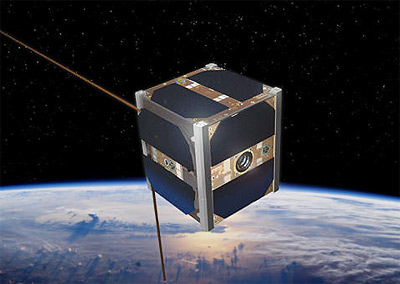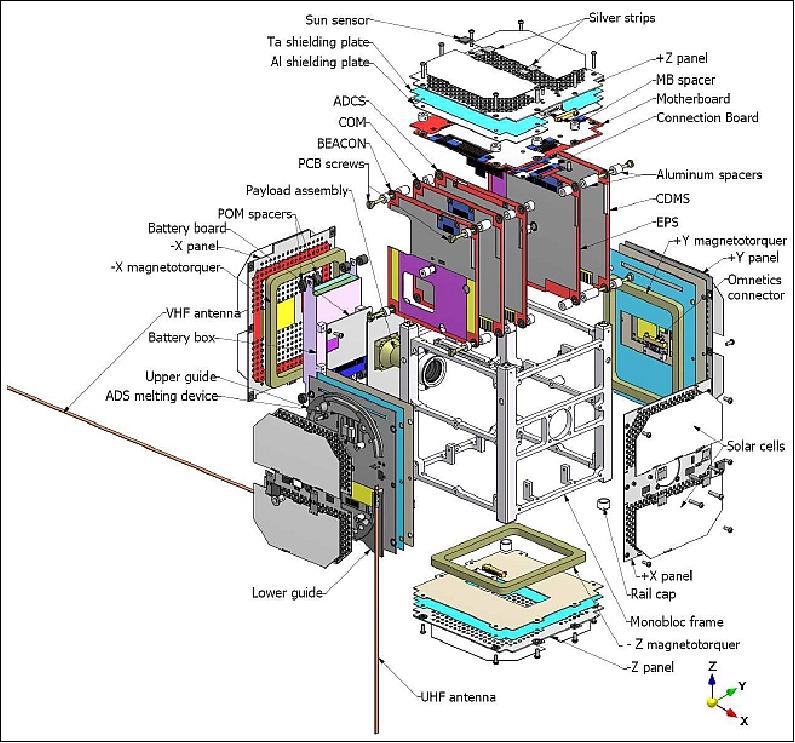The SwissCube project was initiated in 2005 by the EPFL Space Center and the LMTS (Microsystems for Space Technologies Laboratory).
The primary goal is educational in order to show the students how to build a complex engineering system from A to Z. Though the satellite is rather small in size, a cube with sides of 10cm for a weight of less than 1 Kg, it contains all the critical sub-systems and functions present in larger satellites.

SwissCube has also a scientific goal to image the air-glow luminescence created by the recombination of atoms of oxygen at 100 Km of altitude and a technological aim to study a new generation of Earth-sensors for the new generation of satellites. Building a satellite from scratch involves competences in all the major main domain of engineering taught at EPFL, from electronics to electrical power, from mechanical to thermal engineering, from communications to antennas, from material to soldering techniques, from computer science to coding theory, and from control theory to propulsion. In addition, all the equipment has to be light, robust, support heavy dose of radiation, and resist extreme temperature variations.

This satellite follows the CubeSat standard (1kg cube with a 1 liter volume)providing a fast and affordable access to space and the possibility of collaboration with other universities developing their own cubesats”.
With this project, the EPFl Space Center was able to federate and attract students not only at EPFL but in several other Swiss academic institutions (e.g. HES-SO, University of Neuchâtel, FHNW) since the design, construction, and tests of such a complex system require expertise available from both EPF and HES engineers. Moreover, due to the fact that SwissCube will use frequencies allocated to the radio-amateurs to send/receive signals, an excellent cooperation was established with this community.
An important part of the project was to link the work made by the students and the Swiss space industries such as RUAG Aerospace, Oerlikon Space, and CSEM. This close collaboration was extremely fruitful since several SwissCube students are now hired by these industries and technologies developed in the frame of the SwissCube project are being considered by these industries. From an institutional point of view, the Swiss Space Office of the State Secretariat for Education and Research played a key role in supporting the networking of academic and industrial partners.
The launch of the satellite took place on 23 September 2009 from Indian launcher PSLV. In March 2011, not only is the satellite still functioning, but it has started to deliver its precious air-glow pictures to the earth.
For more information on the SwissCube project, you can visit:
- http://swisscube.epfl.ch
- Information for the radioamateur community: https://swisscube.live